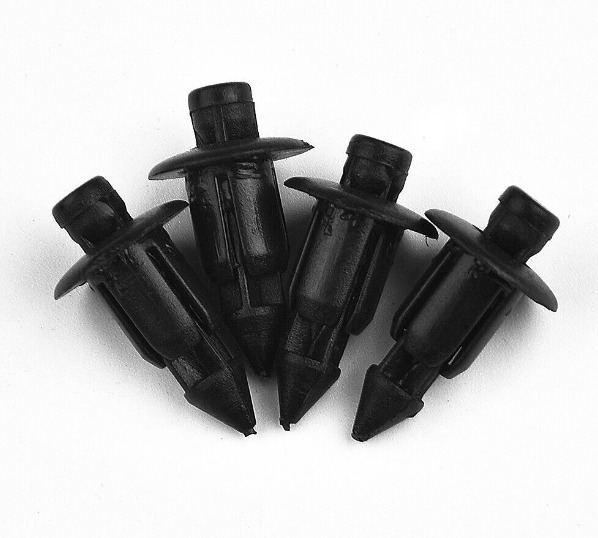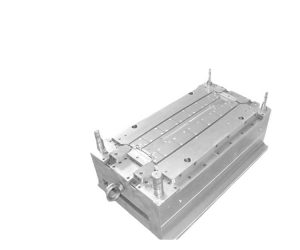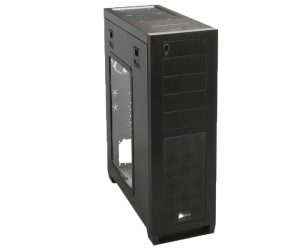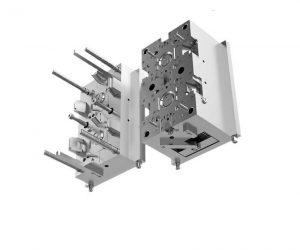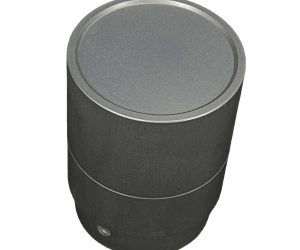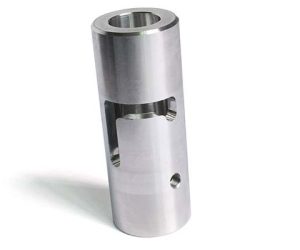a Rapid Tooling Factory is an indispensable tool for modern manufacturers looking to stay competitive, reduce time-to-market, and drive innovation. However, a careful assessment of each project’s needs will ensure that the most appropriate manufacturing process is selected to achieve the best results.
What is a Rapid Tooling Factory?
A rapid tooling factory refers to a manufacturing setup that leverages rapid prototyping technologies to create molds and tools for injection molding, especially for low-volume production. By using advanced techniques like additive manufacturing and computer-aided design (CAD), these factories streamline the process of mold creation, enabling manufacturers to quickly produce prototype parts and fine-tune their designs before committing to mass production.
Injection molding is an essential process widely used to mass-produce plastic components such as medical devices, automotive parts, consumer products, and even toys. While it is highly efficient for large-scale production, the upfront costs and time required to create the molds can be substantial. For manufacturers needing low-volume or customized parts, or wishing to validate product designs, rapid tooling offers an ideal solution by reducing both the time and financial investment traditionally required.
How Does a Rapid Tooling Factory Work?
Rapid tooling factories operate using two main approaches: direct and indirect methods, both of which leverage rapid prototyping techniques to accelerate mold production.
Direct Approach
In the direct approach, molds are created directly from a 3D model using techniques such as 3D printing, CNC machining, or laser sintering. The mold is typically made from materials like aluminum or soft steel, chosen based on the desired strength and complexity of the part. This approach allows manufacturers to achieve intricate geometries that would be difficult, if not impossible, with traditional methods. Notably, the use of conformal cooling channels can enhance heat removal, reducing cycle times and improving overall efficiency.
Indirect Approach
In the indirect approach, a master model of the part is created first, typically through 3D printing or stereolithography (SLA). This model is then used to form the cavity and core of the mold, often through techniques like casting or silicone molding. Mold materials may include epoxy resins, polyurethane, or silicone rubber, depending on the required strength and flexibility of the parts. The indirect method is particularly effective for producing molds with high precision, intricate surface finishes, and complex undercuts that might otherwise be challenging to achieve.
Why Is Rapid Tooling Important?
Rapid tooling has become increasingly crucial for companies looking to stay competitive in industries that demand high innovation and fast turnaround times. By enabling rapid prototyping, manufacturers can not only improve product design but also reduce the risks associated with mass production. The ability to quickly test different configurations, materials, and production methods results in better-performing products and more efficient production processes.
Overall, rapid tooling factories are revolutionizing the way manufacturers approach product development. By dramatically cutting costs, reducing lead times, and offering unparalleled flexibility, these factories empower businesses to test, refine, and perfect their designs before scaling up to full production. This results in products that are not only of higher quality but also come to market faster, giving companies a significant competitive edge.
The Advantages of a Rapid Tooling Factory
A Rapid Tooling Factory offers numerous advantages that make it an invaluable resource for industries engaged in product development. Whether it’s for prototyping, low-volume production, or custom manufacturing, rapid tooling can transform the way products are brought to market. Here are some of the key benefits:
1. Reduced Lead Times
One of the most significant advantages of a Rapid Tooling Factory is its ability to drastically reduce lead times for producing custom molds and tooling. Traditional tooling processes often take weeks or even months due to the labor-intensive steps involved. In contrast, rapid tooling technologies like 3D printing and CNC machining enable manufacturers to produce molds in just a fraction of that time. This shorter production timeline allows companies to accelerate time-to-market, quickly respond to customer needs, and stay ahead of competitors. The ability to quickly turn around prototypes and initial production runs is especially crucial in fast-moving industries like consumer electronics, automotive, and medical devices.
2. Cost-Effectiveness
Another significant benefit of a Rapid Tooling Factory is its cost efficiency. Traditional molding methods often involve high material costs and substantial labor expenses due to the complexities of mold-making. Rapid tooling, however, minimizes the need for expensive tooling molds, and advanced additive manufacturing technologies reduce material waste. By producing molds directly from digital designs, manufacturers can eliminate the need for costly adjustments or complex setups that are typically required in conventional methods. The overall result is substantial cost savings on both production and labor.
3. Greater Design Flexibility and Customization
Rapid tooling allows manufacturers unparalleled design flexibility. Changes can be easily incorporated into the design, enabling quick iterations without significant delays or additional costs. This iterative design process allows for product fine-tuning and optimization, ensuring that potential issues are addressed before entering full-scale production. Moreover, rapid tooling enables the creation of complex geometries and intricate details, which can be difficult or impossible to achieve using traditional mold-making techniques. This makes it particularly beneficial for industries requiring customization or bespoke designs, where high precision and flexibility are critical.
4. Faster Prototyping and Low-Volume Production
Rapid tooling is particularly well-suited for prototyping and low-volume production runs. In the early stages of product development, manufacturers need to validate prototypes, conduct tests, and gather feedback before committing to large-scale manufacturing. Rapid tooling enables the creation of functional prototypes and small production batches quickly and cost-effectively, allowing for real-world testing and design validation. By reducing the risk of costly errors or design flaws in large production runs, companies can ensure that their final product meets customer expectations while avoiding unnecessary costs.
5. Fostering Innovation
One of the key drivers of innovation in manufacturing is the ability to experiment with new design concepts, materials, and production methods. Rapid tooling offers manufacturers access to cutting-edge technologies and materials without the need for significant investments in equipment or specialized expertise. By enabling experimentation with novel ideas and alternative materials, rapid tooling empowers companies to stay at the forefront of innovation and produce products that stand out in the market.
Limitations of Rapid Tooling Factory
While rapid tooling offers many advantages, it also has some limitations that need to be carefully considered before opting for this process:
1. Limited Durability
One of the primary limitations of rapid tooling is that the molds and tools produced may have reduced durability compared to those made with traditional methods. Rapid tooling often uses softer materials, which can wear out faster under high pressure or extreme temperatures. This can be a significant drawback for applications that require long production runs or molds that need to withstand heavy use.
2. Limited Complexity
Although rapid tooling can handle complex shapes and designs, there are still some complexity constraints. Molds produced using rapid tooling methods may be less intricate than those created using traditional techniques, particularly for parts with very fine details or complex features that require high precision. Additionally, the size of parts that can be produced is sometimes limited by the build size of the rapid prototyping machines used.
3. Reduced Accuracy
While rapid tooling offers good precision, it may not match the level of accuracy achievable with traditional methods, particularly for highly intricate parts. The fabrication process, along with potential shrinkage of materials during cooling, can result in minor deviations from the original design. For parts requiring ultra-high precision, traditional tooling methods may still be preferable.
Conclusion: Weighing the Benefits and Limitations of Rapid Tooling
In summary, a Rapid Tooling Factory offers significant advantages that can revolutionize the product development process, especially for companies focused on low-volume production, custom molds, or prototyping. The key benefits include reduced lead times, cost savings, increased design flexibility, faster prototyping, and fostering innovation. By leveraging cutting-edge technologies like 3D printing, CNC machining, and additive manufacturing, manufacturers can speed up their product development cycles and respond to market needs faster.
However, it’s important to note the limitations—such as limited durability, complexity, and accuracy—that come with this approach. Manufacturers need to carefully evaluate their project requirements and the specific needs of their production runs before opting for rapid tooling. In many cases, the trade-offs between speed, cost, and durability will dictate whether rapid tooling is the best solution or if traditional methods are still preferable.
